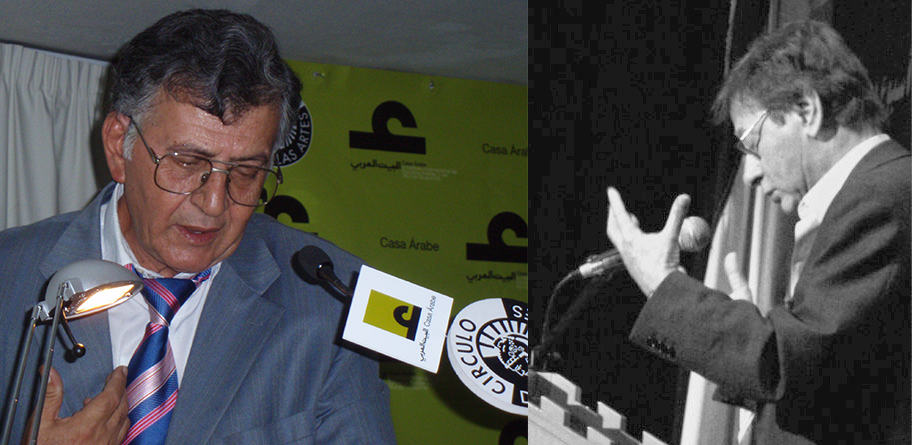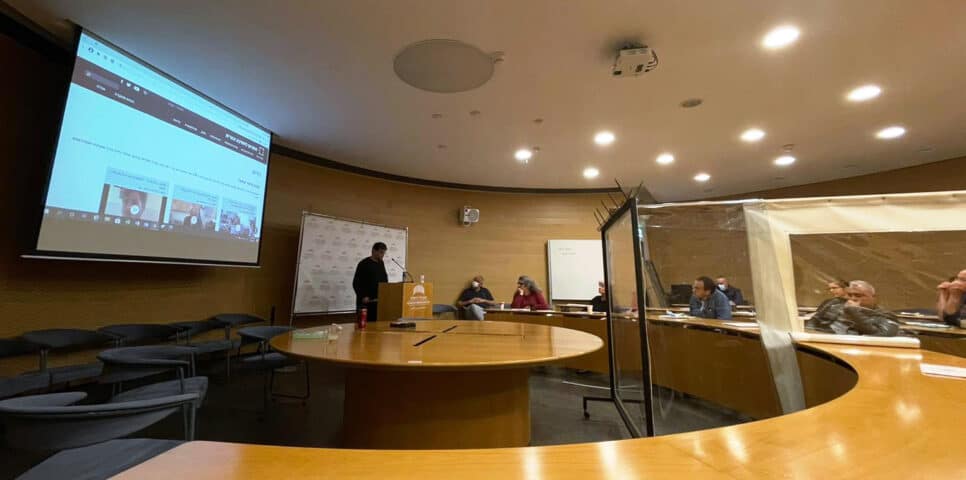From the archives: a model of solidarity

The Van Leer Jerusalem Institute archive contains numerous photographs, letters, and memories from the time of its establishment to the present. A look through our picture albums found a moving photograph, behind of which is a story of heroism that demonstrates the power of solidarity. January 27 was International Holocaust Remembrance Day, and this year we remember it through an exceptional story that occurred in the Netherlands.
Numerous studies from recent years indicate close cooperation between Germans and the civil authorities in the Netherlands during the Nazi occupation. The Germans were assisted by broad cooperation of the various authorities, primarily the Dutch transportation system, for the deportation of Dutch Jewry to the concentration and extermination camps in Eastern Europe. In 1942 special Dutch units were created for the location and disclosure of Jews. The Dutch underground that opposed Nazi rule was only established in 1943, after the Germans had begun recruiting Dutch citizens to forced labor, and after the majority of Dutch Jewry had already been deported.
107,000 Jews were deported from the Netherlands to the extermination camps, and only 5,000 of them survived. About 73% of the Jews who were in the Netherlands at the beginning of the war were killed in the Holocaust – the highest rate of extermination in Western Europe. One third of the Jews who hid during the war were exposed because they were informed on by their Dutch neighbors.
However, within that darkness there were also small rays of light, and one of them is presented in this article.
The inauguration of “The Dockworker," March 20, 1997
A quarter century ago the Van Leer Jerusalem Institute held a very special event: the former Mayor of Amsterdam, Wim Polak and his wife Johanna revealed the model of the statue "The Dockworker" sculpted by Mari Andriessen and belonging to the legacy of Oscar van Leer.
The original bronze 2.65-meter statue was erected in 1952 in the Jonas Daniël Meijerplein in Amsterdam, and serves as a monument for the non-Jewish employees of the city of Amsterdam who went on strike against the persecution of the Jews by the Nazis.
The statue symbolizes the power of the ordinary person to stand up to evil, and every year on February 25 a memorial march is held in front of the statue.

Dutch employees for Jews
The strike, which began on February 25, 1941 and lasted two days, is also called “the February strike,” and was the first protest in history in which a non-Jewish population expressed resistance to Nazism and demonstrated solidarity with the persecuted Jews. It was organized by the Dutch Communist Party (CPN) and included 300,000 people.
One of the party leaders was a municipality employee named Willem Kraan, who cried “Ladies and gentlemen, something must be done!” (H. Bleich, Maariv, February 23, 1966), when he saw with his own eyes how the Gestapo tormented his Jewish neighbors till they blead.
After the Nazis sent 400 Jews to the concentration camps, after they were tortured on the city streets, hundreds of Amsterdam's municipal employees and merchants embarked on a nonviolent strike that paralyzed the city. The employees, who decided to fight for justice and for their friends, hung posters throughout Amsterdam with the words “Strike! Strike! Strike!” and “bring us back the Jews!”
From 8 AM until the early afternoon Amsterdam was brought to a complete standstill: traffic at the port and public transportation stopped and many manufacturers stopped working. On the second day, when the strike gained momentum and spread to other cities such as Utrecht and Harlem, the Nazis murdered some of the demonstrators they had arrested.
After 48 hours the strike ended and left behind it fines, detentions, dead and wounded. Jews were executed as well as some of the participants in the protest, including Willem Kraan.

For further information read the article The two sides of the globalization of Holocaust memory, and watch the lectures What is memory? 70 Years later and But there was love.
From the archive of the National Library of Israel
- “They’re murdering our Jews” (H. Bleich, Maariv, February 23, 1966)
- The statue “The Dockworker” – a symbol of the rebellious spirit of the Dutch people (Kol Ha’am, February 25, 1965)
- Amsterdam workers in solidarity with the Jews (Haboker, March 4, 1941)




